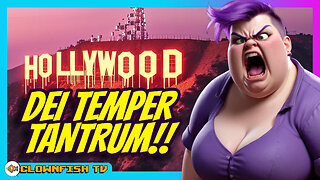Premium Only Content

On the Semi-Objective Figures-of-Merit in My Book Reviews
Greetings everyone. I made this short video just to quickly highlight my reasoning regarding the semi-objective figures-of-merit that I apply to the review videos of the science fiction novels that I will be covering in the foreseeable future. As I mentioned in the introductory video to this channel, these figures-of-merit should give you – the viewer – a quick understanding what reading the novel in question will entail. Obviously, there can always be a debate regarding the precise value that one novel will have in a certain category compared to another and this video will hopefully act as a blanket admission that my ratings will likely be biased in some form or another – even if I try my best to be impartial.
Let us quickly run down the four categories in question.
At first we have the science fiction hardness, where high scores signify that the novel under review was meticulously researched and any kind of portrayed advancements are physically possible, if not even technologically likely in the near future. At the opposite end we have soft science fiction or science fantasy, where we experience technologies indistinguishable from magic that break our common understanding of the natural laws.
The second figure of merit is related to the scope of the literary world or universe in which the story takes place. High scores in this category signify a vast literary setting with many places that we experience throughout the story. Keep in mind that this is not necessarily directly correlated to the scale of the setting itself, but how it is actually represented in the story. As an example, if it is mentioned in the story that there are ten thousand worlds, but the story takes place on a single planet – and possibly just in a couple of settlements – then this would result in a score at the lower end of the scale. In contrast, stories that take place on a single planet with dozens of fleshed-out cities, settlements, and stations that are frequented regularly during the narrative can easily score at the high end of the scale.
The third figure of merit is probably the most subjective, as it tries to gauge the originality and novelty of the story. For one, the concepts in some novels might strike me personally as quite original and novel because I just read them first compared to other books that might deserve credit for introducing these concepts in the first place, but of which I am unaware of. If this is the case, you can feel free to make use of the comment section to make me aware of this. Furthermore, there can always be lengthy debates over what actually constitute original and novel concepts. Nonetheless I will try to keep this as unbiased as possible. In this category, high scores signify a significant amount of original and novel concepts introduced in a story, whereas lower scores indicate novels with more generic concepts and ideas.
The last figure of merit is related to the so-called dramatis personae. Here I will try to quantify the amount of relevant characters of a book, which fortunately is a relatively straight forward thing to do. High scores therefore signify stories with large amounts of main- and side-characters, whereas low scores indicate the presence of only a handful of characters, similar to chamber plays.
These four semi-objective figures-of-merit are meant to quickly give you an overview of what type of story we are dealing with. They are not meant as scores of quality, where higher values are better. I cannot stress this last point enough and you need to keep this in mind!
With that out of the way, I do hope that some of you will find these videos entertaining and will enjoy watching them. Thanks for watching and until next time.
-
 LIVE
LIVE
Adam Does Movies
6 hours ago $0.02 earnedAsk Me Anything - Live!
263 watching -
 DVR
DVR
Flyover Conservatives
21 hours agoFollow the Money: $4.7 Trillion in Government Fraud EXPOSED!; Flu Shots, Fear & Big Pharma Lies—What They DON’T Want You to Know - Dr. Stella Immanuel | FOC Show
19.2K -
 LIVE
LIVE
Anthony Rogers
1 day agoEpisode 354 - Current Events, Weather, and Other Clickbait
221 watching -
 25:10
25:10
Producer Michael
6 hours agoTHE HOTTEST FRAGRANCES FOR 2025!
23.1K1 -
 18:44
18:44
Clownfish TV
5 days agoHollywood Has a DEI Temper Tantrum!
13.7K7 -
 1:01:42
1:01:42
The StoneZONE with Roger Stone
2 hours agoRoger Stone Provides Crucial Update On Classified JFK Assassination Docs | The StoneZONE
29.4K4 -
 1:09:44
1:09:44
Slightly Offensive
3 hours ago $0.38 earnedALMOST SERIOUS: How Mass Legal Immigration DESTROYED Australia | Guest: Maria Zeee
30.7K3 -
 54:43
54:43
LFA TV
1 day agoTrump vs. Karl-Theodor zu Guttenberg | TRUMPET DAILY 2.18.25 7PM
25.1K4 -
 2:02:21
2:02:21
Revenge of the Cis
8 hours agoEpisode 1449: Boo This
78.5K14 -
 1:20:31
1:20:31
Awaken With JP
9 hours agoWiping Hard Drives, Hire a Criminal Defense Lawyer - LIES Ep 79
112K63